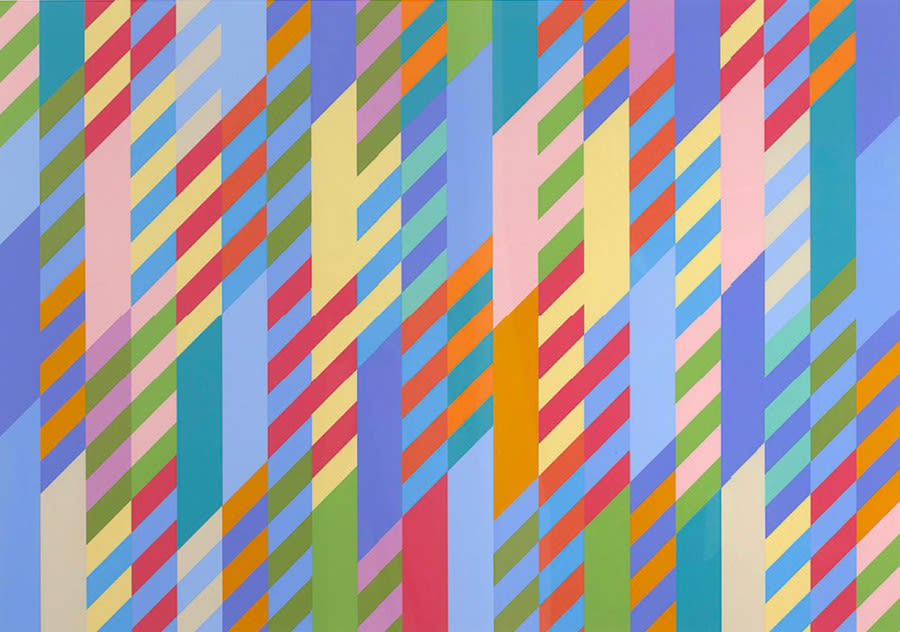David Hockney U. K., b. 1937
Biography
'What an artist is trying to do for people is bring them closer to something, because art is about sharing. You wouldn't be an artist unless you wanted to share an experience, a thought.' - David Hockney
David Hockney, born on July 9, 1937, in Bradford, Yorkshire, England, is widely regarded as one of the most influential British artists of the 20th and 21st centuries.
He graduated from the Bradford School of Art in 1958, and studied at the Royal College of Art in London (1959-1962), where he quickly gained recognition for his exceptional draftsmanship and innovative approach to painting.Hockney's early works were stylistically diverse, incorporating elements of Pop Art and exploring themes of popular culture and mass media. His artistic repertoire expanded to include painting, printmaking, photography, and stage design, showcasing his versatility and willingness to experiment with various mediums.
In 1963, Hockney moved to Los Angeles, a decision that would profoundly impact his artistic style and subject matter. The vibrant California landscape, with its intense light and modernist architecture, became a significant source of inspiration for his work. His iconic swimming pool paintings, such as A Bigger Splash (1967), captured the essence of Southern California's leisurely lifestyle and became synonymous with Hockney's oeuvre.
Throughout his career, Hockney has consistently pushed the boundaries of artistic expression. In the 1980s, he began experimenting with photocollages, creating composite views that challenged traditional notions of perspective. His embrace of new technologies led him to explore digital art, including iPad drawings, which have become an integral part of his later work.Hockney's significance within the context of contemporary art.
As a key figure in the British Pop Art movement of the 1960s, he helped redefine the artistic landscape of post-war Britain. His bold use of colour, innovative compositions, and exploration of themes such as sexuality and personal relationships have had a lasting impact on contemporary art.
Hockney has enjoyed numerous retrospective exhibitionss at museums worldwide. In 2012, the Royal Academy of Arts in London hosted David Hockney: A Bigger Picture, a blockbuster exhibition featuring large-scale works inspired by the East Yorkshire landscape. His 80th birthday was marked by a comprehensive retrospective co-organized by Tate Britain, Centre Pompidou, and the Met, featuring works from 1953 to 2017, becoming one of the most visited single-artist exhibitions.
Hockney's works are housed in prestigious institutions globally, including the Museum of Fine Arts in Boston, the National Gallery of Australia, the Art Institute of Chicago, the National Portrait Gallery in London, the Metropolitan Museum of Art in New York, Centre Georges Pompidou in Paris, and the Museum of Contemporary Art in Tokyo. Currently residing in Normandy, France, Hockney continues to create and innovate, cementing his legacy as one of Britain's most celebrated artists.
Works
-
 David HockneyRemember That You Cannot Look At the Sun, 2021view more details
David HockneyRemember That You Cannot Look At the Sun, 2021view more details -
 David HockneyMy Window - IPad drawing 'No. 535', 28th June 2009, 2019view more details
David HockneyMy Window - IPad drawing 'No. 535', 28th June 2009, 2019view more details -
 David HockneyMy Window - IPad Drawing 'No. 610', 23rd December, 2010, 2019view more details
David HockneyMy Window - IPad Drawing 'No. 610', 23rd December, 2010, 2019view more details -
 David HockneyMy Window - IPad Drawing 'No.281', 2010, 2019view more details
David HockneyMy Window - IPad Drawing 'No.281', 2010, 2019view more details -
 David HockneyUntitled for Joel Wachs, 1993view more details
David HockneyUntitled for Joel Wachs, 1993view more details
Exhibitions
Video







